 W
WCamponotus essigi is a species of ant in the family Formicidae.
 W
WDrunella coloradensis is a species of spiny crawler mayfly in the family Ephemerellidae. It is found in Central America, North America. In North America its range includes southwestern, northern Canada, northern Mexico, the western United States, and Alaska.
 W
WGomphidia kodaguensis is a species of dragonfly in the family Gomphidae. It is
 W
WHaematopota pseudolusitanica is a species of horse fly in the family Tabanidae.
 W
WHeterocloeon curiosum is a species of small minnow mayfly in the family Baetidae. It is found in North America.
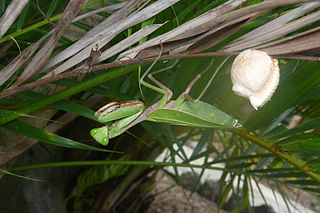 W
WHierodula majuscula is a species of praying mantis in the genus Hierodula. It is also known as the giant rainforest mantis and the Australian giant mantis. It is found in coastal northern Australia, most usually in rainforest and adjacent habitats. This species is typically green although a less common bright yellow form does occur.
 W
WIsoperla holochlora, the pale stripetail, is a species of green-winged stonefly in the family Perlodidae. It is found in North America.
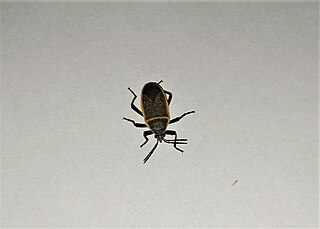 W
WLargus californicus, also known as the California bordered plant bug, is a species of bordered plant bug in the family Largidae. It is found in western North America, as well as parts of Central America. They measure around 2.5 cm in length. Adults have a black exoskeleton with yellow edges on the thorax and abdomen. Nymphs are also black, but with a red spot in the center of the abdomen and no borders.
 W
WLasioglossum hemichalceum, which has sometimes been confused with L. erythrurum, is a sweat bee endemic to Australia. Large numbers of unrelated females will typically share a single nest, a behavior referred to as "communal". Nests are constructed underground by the independent efforts of the females. L. hemichalceum will typically begin creating new colonies during the summer, with brood production from late November through the first few months of spring. Members of this species do not demonstrate aggressive behavior towards one another. As the size of the colony increases, the reproductive potential of each female does not change, unlike many species of bees.
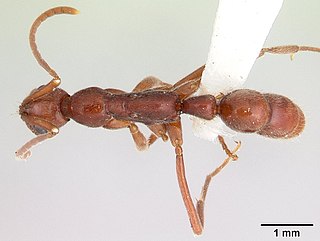 W
WLeptogenys manni is a species of ant in the family Formicidae.
 W
WLeuctra duplicata, the Atlantic needlefly, is a species of rolled-winged stonefly in the family Leuctridae. It is found in North America.
 W
WMaoricicada campbelli, also known as the Campbell's cicada, is a species of cicada that is endemic to New Zealand. This species was first described by John Golding Myers in 1923 under the name Melapsalta campbelli. It was named in honour of James Wishart Campbell, who collected the first specimens of this species.
 W
WMaoricicada lindsayi, also known as the Lindsay's cicada, is a species of insect that is endemic to New Zealand. This species was first described by John Golding Myers in 1923. Myers named the species in honour of Charles Lindsay who collected the holotype specimen.
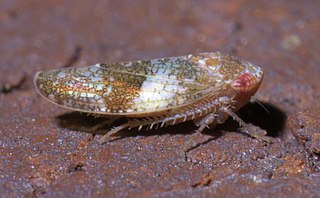 W
WNorvellina chenopodii is a species of leafhopper in the family Cicadellidae.
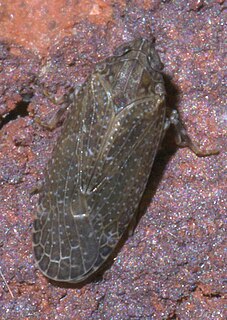 W
WOpsiplanon luellus is a species of achilid planthopper in the family Achilidae. The species is also referred to as Opsiplanon luella.
 W
WPacarina puella, the little mesquite cicada, is a species of cicada in the family Cicadidae. It is found in Central America and North America.
 W
WParastratiosphecomyia stratiosphecomyioides is a species of fly in the family Stratiomyidae. It is native to Thailand. Its genus name comes from Ancient Greek, meaning "Near soldier wasp-fly", with its species name meaning "wasp fly-like". It is considered to be the animal with the longest valid scientific name; the name Gammaracanthuskytodermogammarus loricatobaicalensis was longer, but was suppressed and is no longer valid.. The proposed name for a bacterium, Myxococcus llanfairpwllgwyngyllgogerychwyrndrobwllllantysiliogogogochensis, is a longer name, but it is not an animal, and under the rules of nomenclature for bacteria, the name still must be published in the International Journal of Systematic and Evolutionary Microbiology (IJSEM) before it is accepted as valid. P. stratiosphecomyioides, sometimes referred to as the Southeast Asian soldier fly, was described in 1923 by British entomologist Enrico Brunetti.
 W
WPeripsocus milleri is a species of Psocoptera from Peripsocidae family that can be found in Great Britain and Ireland. They can also be found on Azores and Canary Islands, Belgium, Croatia, France, Italy, and Spain. The species are brown coloured.
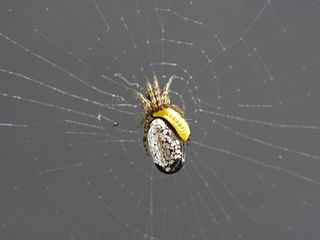 W
WReclinervellus nielseni is one of the spider-ectoparasitoids belonging to the Polysphincta genus-group and utilizes exclusively Cyclosa spiders as hosts. The species is distributed through Canada region but is rather sparse. Host spider species is different in accordance with the region, that is Cyclosa conica in Europe whereas Cyclosa argenteoalba in Japan.
 W
WSikaiana harti is a species of derbid planthopper in the family Derbidae.
 W
WSoyedina vallicularia, the valley forestfly, is a species of spring stonefly in the family Nemouridae. It is found in North America.
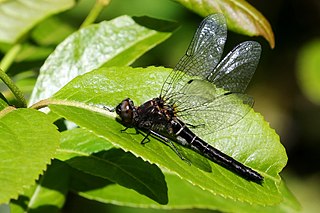 W
WThe ebony boghaunter or Fletcher's dragonfly is a species of dragonfly in the family Corduliidae. It is found in Canada and the United States. Its natural habitat is swamps and bogs.